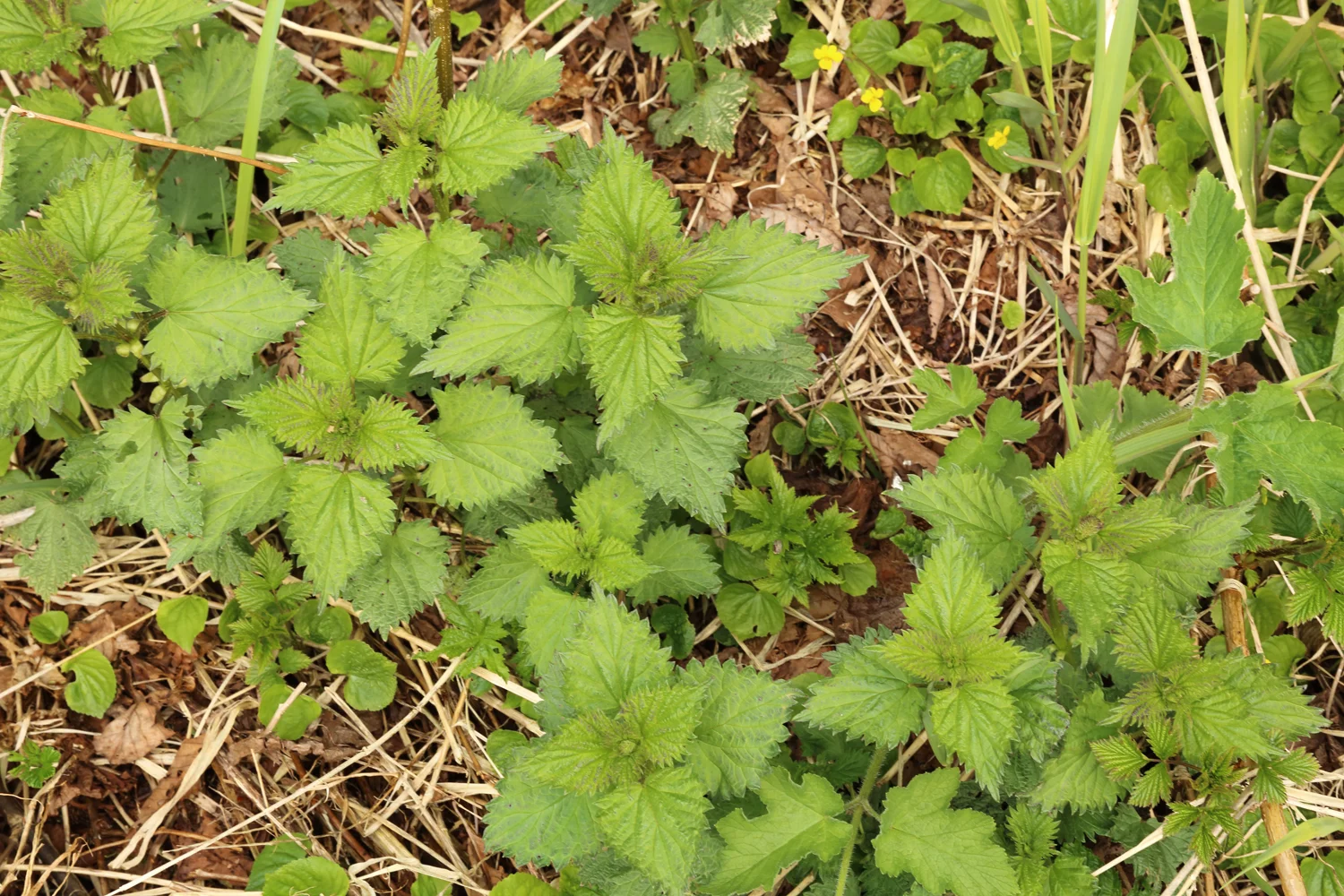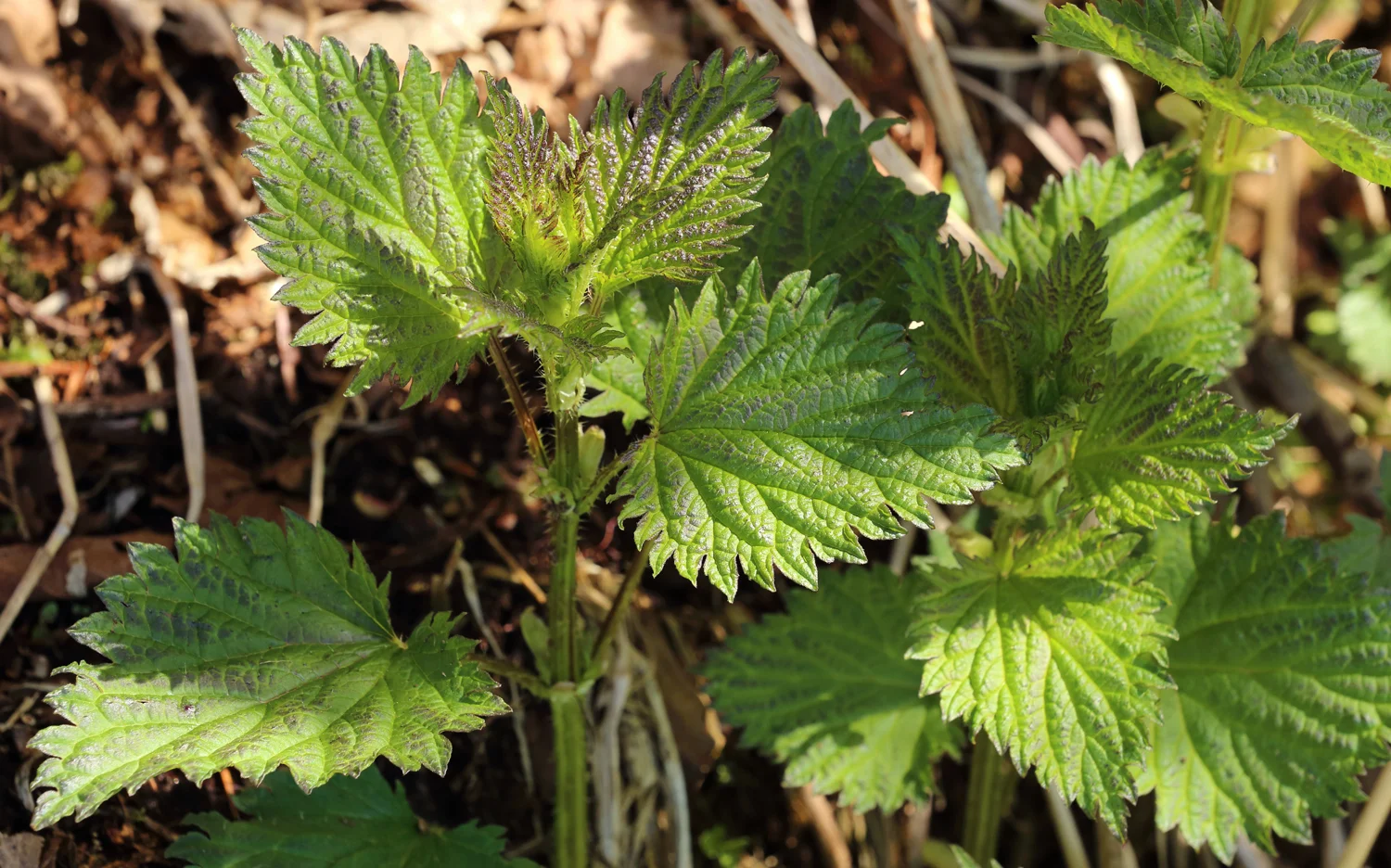Foraging Stinging Nettles, Tasty Spring Greens
/From mid-April till mid-May I keep an eye out for nettles to harvest in Southeast Alaska. I enjoy them steamed, added to soups and stews, and dry them for use through the year. Nettles are tasty and very nutritious.
There’s a catch, though, and if you have ever touched nettles then you know it. This plant has tiny hairs that inject irritating compounds into the skin. Within seconds of brushing bare skin against a nettle plant there is a prickly burning sensation and a red rash develops. The discomfort and rash usually go away within twenty minutes or so without lasting effect, but the plant itself can be used for faster relief. Put on gloves and rub nettle leaves vigorously between your gloved hands, and then apply the mushed leaves to the rash.

A patch of young nettle plants near Juneau.
In my truck are nitrile or latex gloves, scissors, and gathering bags. Fresh greens will wilt and compost very quickly, especially in a warm car, so on gathering days I put a cooler with a few plastic bottles of ice into the truck . If you don’t have a cooler then try to keep your herbs cool, allow air to circulate freely around them, and get them processed as soon as possible.
Update! I opened a new box of nitrile gloves, and they were thinner. I was getting stung through the gloves! I doubled them and no more stings. So, if you are using 'surgical' gloves then double them.
When I am headed out on a walk by a stream, lake, or beach in April and May then I tuck those gloves, scissors, and bags into my pack, because that is where I most often find nettles here in Southeast Alaska. Near Haines I have found them along roadsides and in the forest, too.
I have also seen nettles growing near houses and old cabins. This plant is so useful that it is a great garden addition if it is contained. Nettles happily spread themselves into rich, disturbed soil and then thrive for years. That time that I “helped” a friend by weeding the nettles out of between the rows in her garden? Yeah, (*blush*) that was when I learned that nettles are prized food.

See the stinging hairs on the stem? They are on the leaves, too, with more on the underside than on the upper surface. (Click on photo to enlarge it)

The nettles in this photo are middle to right. The lighter green leaves on the left are thimbleberry and salmonberry.
So you don’t want to get stung to figure out if it is the right plant. Nettles have erect stems, up to 7 feet tall, opposite leaves with toothed edges, and have tiny hairs (sometimes difficult to see) protruding from leaves and stems. There are several varieties of nettles, so the leaves may be lanceolate, oval, or heart-shaped with pointed tips. Early in the year the new leaves are often red or purple. That said, there are other plants that look similar, so I look closely for those little stinging hairs poking out, especially from the stem. Please don’t use only the photos on this page to identify the plant. There are recommended books listed at the bottom of the page that will help with identification.
I use the top portion of the plant when it is very young, snipping it off with scissors. The whole plant may be okay to use when it is under ten inches high, but I always leave the bottom half of the plant so that it will regenerate more quickly for a second harvest. As the nettles get bigger I take the new growth only. Never use older, more mature leaves, as they contain substances that irritate your innards. And those buggy leaves? Leave those alone. They are a little bit yucky, and most likely have chemicals in them that the plant is producing to fight the bugs.
When I harvest nettles for steaming I put them loosely into paper bags or a plastic grocery bag, leaving the top open. Yes, gathering herbs in plastic bags is not recommended, but some days it is so rainy here that baskets and paper bags just don't work well. Garbage bags, even the white kitchen trash bags, often have pesticides added to them, so I stay away from those when gathering food. And, of course, gather only what you can process that day.

I often find yellow violets near nettle patches. This is another edible and medicinal plant!
In a few days I will post more about the nutritional value of nettles, and about preserving and using them. Right now, though, the river is calling so I must go walk along it's banks.
Great books:
- Discovering Wild Plants by Janice Schofield
- Plants of Coastal British Columbia including Washington, Oregon, and Alaska by Pojar and MacKinnon
- Medicinal Plants of the Pacific West by Michael Moore
Happy Foraging!
Alaska Beachcomber
Related posts: Wild Tea, Harvesting Devil's Club Root, Devil's Club Salve and Tincture,
And check out the Food and Medicine from Nature index for more!

